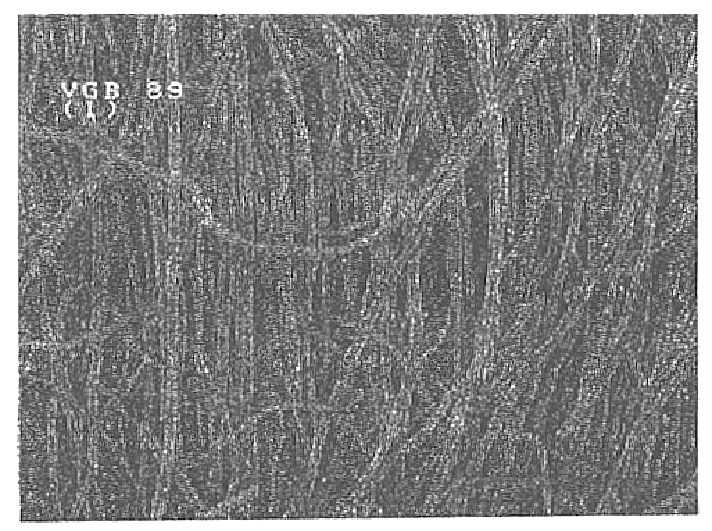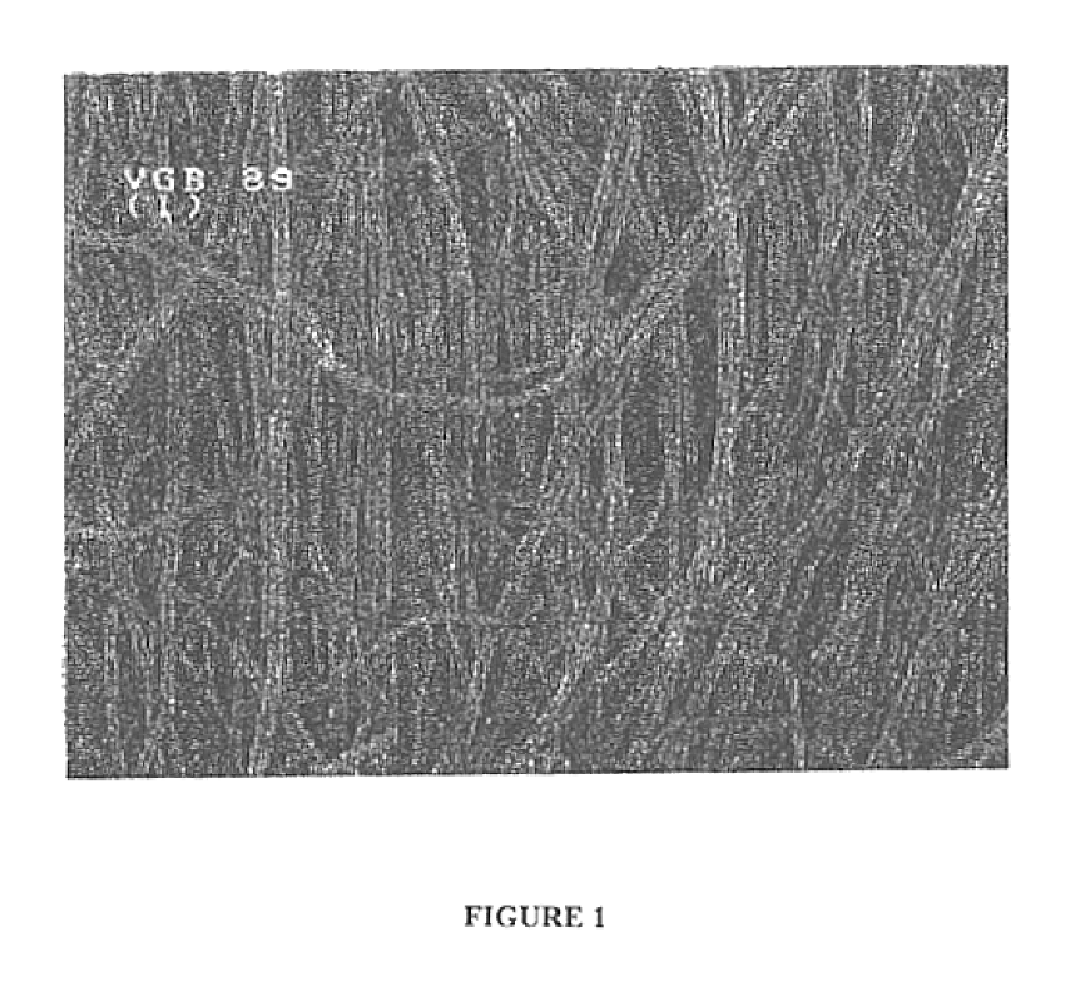Mixing and dispersion of nanotubes by gas or vapor expansion
a technology of nanotubes and gas or vapor expansion, which is applied in the direction of non-metal conductors, applications, conductors, etc., can solve the problems of adding additional processing steps in the manufacturing of such metal parts, and increasing the weight of the completed electronic devi
- Summary
- Abstract
- Description
- Claims
- Application Information
AI Technical Summary
Benefits of technology
Problems solved by technology
Method used
Image
Examples
example 1
[0031]In brief, aligned multi-walled carbon nanotubes were grown on a quartz substrate in a reactor. The catalyst / carbon source mixture was introduced into the reactor by injection through a flow of inert gas (to exclude oxygen). The product may be recovered from the quartz substrates by mechanical means. As seen in FIG. 1, the process resulted in a high purity, highly aligned multiwalled carbon nanotube product.
[0032]In one embodiment, the NE-MWNTs have an aspect ratio of from about 10 to about 50,000. In a preferred embodiment, the NE-MWNTs have an aspect ratio of from about 500 to about 10,000. In a particularly preferred embodiment, the NE-MWNTs have an aspect ratio of from about 1000 to about 5000. The diameter of the NE-MWNTs useful in the methods of the present invention may range from about 3.5 nanometers to about 200 nanometers. In an especially preferred embodiment, the diameter of the NE-MWNTs useful in the methods of the present invention may range from about 20 nanomete...
example 2
[0037]In this example, coating of a desired substrate with the NE-MWNT-containing compositions of this invention is demonstrated. The method described in this example comprises the steps of:[0038]1. Dispersing NE-MWNTs in solvent (10 mg NE-MWNT / 100 ml ethanol). Dispersion may be achieved by mechanical mixing or sonication.[0039]2. Starting air flow through the eductor.[0040]3. Feeding the NE-MWNT / solvent mixture to the suction port on the eductor, either manually or through tubing.[0041]4. Applying the discharge from the eductor to the target surface. As the gas / liquid mixture expands out of the nozzle of the eductor, it becomes an aerosol that can be used to spray a thin coating of the NE-MWNT / solvent mixture onto the target surface.[0042]5. Allowing the solvent to partially evaporate between applications of coatings of the NE-MWNT / solvent mixture of this invention.
As described above, uniform coating of the desired surface may be On achieved by merely allowing the solvent to evapor...
example 3
[0049]FIGS. 2a and 2b show the real (FIG. 2a) and imaginary (FIG. 2b) permittivity of an acrylonitrile-butadiene-styrene (ABS) polymer matrix coated with the NE-MWNT compositions of the present invention. The compositions of the invention were produced and applied to the ABS matrix as described in Example 2, except that tetrahydrofuran (TNF) was selected as the solvent to allow formation of a surface nanotube coating substantially contiguous with the surface of the ABS matrix. The composition of this invention is compared with a known technology for use in EMI shielding of small electronic devices, specifically a powdered nickel coating. The approximate surface concentration of the NE-MWNT coating is less than 5 mg / m2.
[0050]As clearly demonstrated in FIGS. 2a and 2b, the permittivity of the NE-MWNT(35B)-coated material is significantly higher than that of the nickel coating (Ni) over the frequency range 0 to 2000 MHz. This demonstrates that the NE-MWNT coating of the present inventi...
PUM
| Property | Measurement | Unit |
|---|---|---|
| Diameter | aaaaa | aaaaa |
| Diameter | aaaaa | aaaaa |
| Diameter | aaaaa | aaaaa |
Abstract
Description
Claims
Application Information
 Login to View More
Login to View More - R&D
- Intellectual Property
- Life Sciences
- Materials
- Tech Scout
- Unparalleled Data Quality
- Higher Quality Content
- 60% Fewer Hallucinations
Browse by: Latest US Patents, China's latest patents, Technical Efficacy Thesaurus, Application Domain, Technology Topic, Popular Technical Reports.
© 2025 PatSnap. All rights reserved.Legal|Privacy policy|Modern Slavery Act Transparency Statement|Sitemap|About US| Contact US: help@patsnap.com



